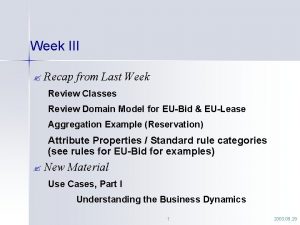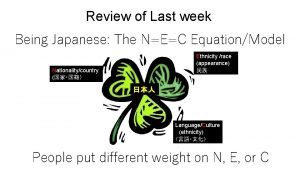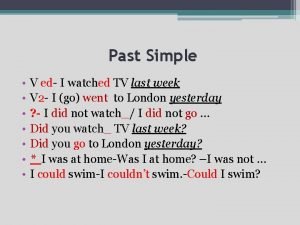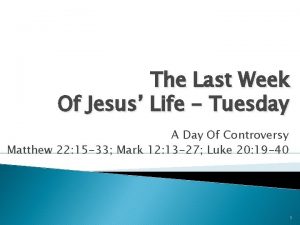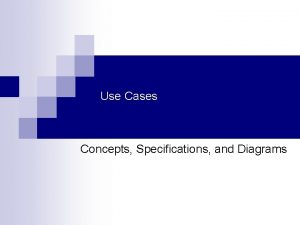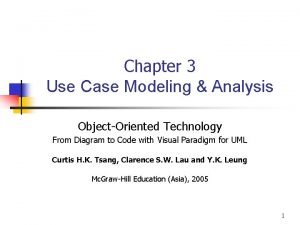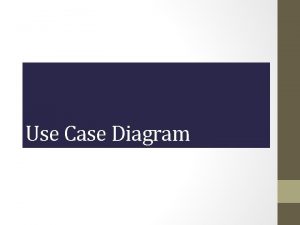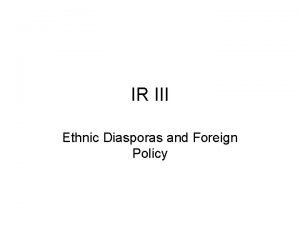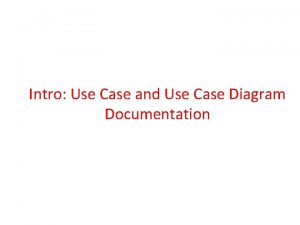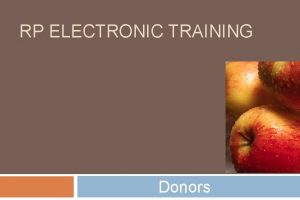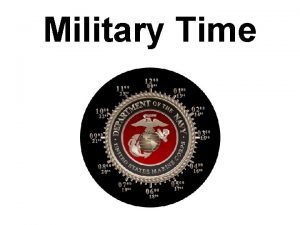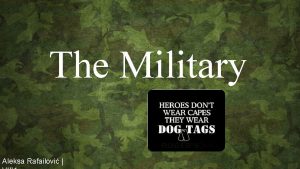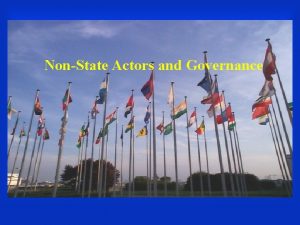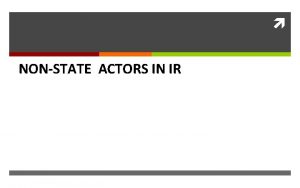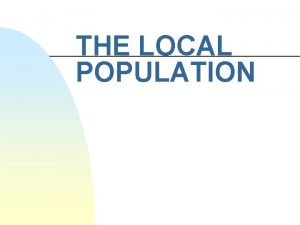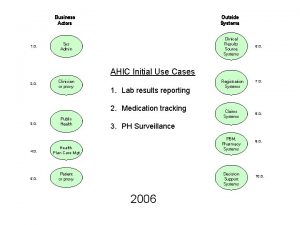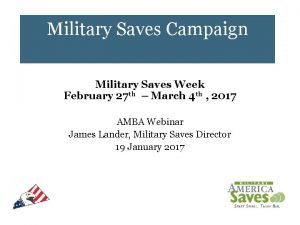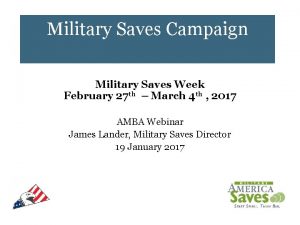OUTSIDE ACTORS DONORS and MILITARY Topics Last Week




































- Slides: 36

OUTSIDE ACTORS DONORS and MILITARY

Topics Last Week n NGOs by Gerry Martone

TOPICS n n n Next week readings Donors (perhaps) Military u Review of earlier discussion of military intervention u Tasks u Implementation u Alternatives u Conclusions n Guest Speaker: Tanya Domi

Remember the 4 themes? WHEN AND HOW TO n n INTERVENE? (SOVEREIGNTY IN INTRA-STATE CONFLICTS) CONTINUUM DEBATE: LINKING RELIEF, REHABILITATION AND DEVELOPMENT DECLINING RESOURCES, DISPARITIES IN ALLOCATION MANAGEMENT u INTER-ORGANIZATIONAL u INTRA-ORGANIZATIONAL

ODA as a Percentage of Government Expenditure

Aid to Developing Countries in Millions of Dollars Source: Based on 1998 OECD statistics. World Disasters Report 2000.

Aid to Developing Countries as Percentage of GNP Source: Based on 1998 OECD statistics. World Disasters Report 2000.

Aid to Developing Countries as Percentage of GNP from 1956 to 1998 Source: Based on 1998 OECD statistics. World Disasters Report 2000.

What is Aid Spent On?

Source: Global Humanitarian Emergencies: Trends and Projections, 1999 -2000. National Intelligence Council, August 1999.

How Aid is Given

Bilateral Spending for Emergencies 1998 Source: Based on 1998 OECD statistics. World Disasters Report 2000.

Increase in Emergency Spending in Dollars 1980 s 1990 s Source: World Disasters Report, Oxford University Press, 1998

Emergency Relief as Percentage of All Development Assistance Source: Based on 1998 OECD statistics. World Disasters Report 2000.

Top Donors to Refugee Aid Agencies in Millions of Dollars United States Japan European Commission Norway Sweden Netherlands Denmark Germany Switzerland Canada United Kingdom Australia Finland Adapted from World Refugee Survey 2000, U. S. Committee for Refugees. 444. 9 160. 1 138. 9 70. 3 68. 3 60. 9 56. 4 52. 9 49. 8 38. 8 36. 3 26. 8 18. 0

Top Donors to Refugee Aid Agencies in US Dollars Per Capita Population Norway Denmark Sweden Switzerland Luxembourg Netherlands Finland United States Australia Canada Japan Ireland Belgium Kuwait Adapted from World Refugee Survey 2000, U. S. Committee for Refugees. 15. 62 10. 63 7. 67 7. 01 5. 97 3. 86 3. 47 1. 63 1. 41 1. 27 1. 26 1. 10 0. 89 0. 71

Percent of military expenditure Development Assistance as a Percentage of Military Expenditure Source: Adapted from United Nations Development Program. Human Development Report. New York, NY: Oxford University Press; 1996.

Percentage of Bilateral Assistance Allocated to Emergencies 1996 Source: World Disasters Report, Oxford University Press, 1998

Percentage of Foreign Assistance Spent as Emergency Aid, 1999

Donors: Conclusions n n ODA has started to increase slightly again in the last 2 years; but it is a small part of: u GNP u military n n n spending Emergency spending seems to be cyclical Multilateral aid is relatively small: Bretton Woods institutions are doing better than the UN NGOs grew financially in the past decade Also, there are huge disparities in allocation Absorptive capacity can also be a problem

Military n n Remember the Breakdown of Distinctions: we discussed the overlap/interdependence among Security, Relief, Rehabilitation, and Development. In addition, we discussed the Continuum Debate. Remember discussion on types of intervention

TYPES OF INTERVENTIONS Military n Security Council decision n Department of Peacekeeping Operations (DPKO) n all other organizations n ++ Legal (Moral) Civilian (UN mainly) n Secretary General initiative n Department of Political Affairs (DPA) n all other organizations n ++ Moral (Legal) Civilian (NGO mainly) n no central decision (state sovereignty) n all organizations (but not SC or SG) n ++ Moral (Legal)

MILITARY INTERVENTION n Double nature of the military: due to its power and technology, it is ua decisive threat to life & order, and u the instrument to protect both n When to use force? u Non-intervention is the norm to contain powerful states and protect sovereignty

MILITARY INTERVENTION n One big exception (allow use of force): u Genocide (but no force used to stop Rwandan genocide) u Human Rights abuses? u Cross-border impact n Hehir (chapter 2) wants to broaden the possibilities for intervention in case of human rights abuse in failed states

MILITARY INTERVENTION n If one uses force, distinguish: u jus ad bellum (defining the conditions under which force can be used) u jus in bello (defining how force is to be legitimately employed) The latter will get (a bit) more attention today n Normally, the Security Council decides, one big exception: NATO action in Serbia/Kosovo

MILITARY INTERVENTION n Different types of military intervention: u preventive measures u peacekeeping F 1 st generation: separating warring groups F 2 nd generation: peace-building with an essential security component (incl. facilitation and protection of humanitarian assistance) u peace-building u peace-making u peace enforcement: actual use of force to end conflict and/or to protect minorities, such as the Kurds and the no-fly zone, (it can include the facilitation and protection of humanitarian relief).

MILITARY INTERVENTION n n Differentiate actual use of force from facilitating & protecting peace accords and hum. relief! In all but peace-enforcement consent of the parties is crucial Peace enforcement has been the least successful in practice, e. g. , Somalia. It can also compromise impartiality/neutrality of humanitarian organizations threat of force (deterrence) does not function as in inter-state conflict. It is more limited, because factions are already fighting. After Somalia and Rwanda, most thugs don’t have a high opinion of peacekeeping forces.

TASKS (facilitation & protection) n n n The release and transfer of prisoners (military can take care of security and logistics) Logistics (as with natural disasters, e. g. , food transport, infrastructure (tents, bridges, simple buildings, heavy equipment)) Search for missing persons Mine awareness Civilian-Military Cooperation (CIMIC), e. g. , information exchange, security meetings

TASKS (facilitation & protection) n n NGOs & military can train each other on operations, on rebuilding, on international humanitarian law, etc. Security/Protection is a hot issue. Generally, NGOs like to remain independent (see Tauxe on ICRC)

Implementation: Mandate of the Military n n n Under which Security Council resolution? What are the exact contents (tasks, enforcement, duration)? Which countries contribute? What can they contribute (equipment, quality of manpower, etc. ) Who leads the force? u quality of the commander of the forces; u quality of the Special Representative of the Secretary General & UN HQs’ support; u Do donor countries support the SRSG and commander? (Do we need African operations led by Africans? )

n Implementation: Cooperation of the Military, Civilians (NGOs) Protection (security of the NGOs) by the military in Somalia actually led to more violence. This highlights some possible military shortcomings: u mission creep (from security role to political, enforcing role); u Generally, weapons reinforce language of war; u Military are not a democratic institution. This leads to cultural differences: F not participatory F role of hierarchy/ centralization (vs. decentralization & field initiative in most NGOs) F different meaning of protection (security vs. int. refugee law)

Alternatives 1. Humanitarian action alone (the other two types). Sometimes this has been more effective, sometimes this was an excuse for international political inaction. Central question: are the root causes tackled? 2. Development cooperation (same question) 3. Sanctions (blunt instrument) & Conditionality 4. Denunciations 5. Denial of diplomatic privileges 4. Let them fight it out u the end of the war u hurting stalemate/ripeness of conflict u can imply genocide?

Conclusions n n Comparing the three types of intervention, there are more civilian missions and NGO activities than military interventions Peace enforcement only in rare cases & it can compromise humanitarian actors Military/UN/NGO relationship is here to stay, but it is often an uneasy relationship Different perception of mandates; how do Military perceive their mandate and how do NGOs perceive their mandate? In principle, the mandates can be complementary & none of the authors in Moore wants to completely abolish the use of force

Conclusions n n Define what you mean by use of force (enforcement or facilitation and protection) Check alternatives, but these also have their problems. Central question is and remains are the root causes being tackled!

Conclusions n n More intra-state conflicts have led to a broader interpretation of security: aids, underdevelopment, civil wars (terrorism), etc. are now increasingly seen as international security threats However, the preference is to delineate the respective roles and tasks of humanitarian and military actors better (whereas in the areas of relief, rehabilitation, and development the tendency is towards more complete forms of reintegration)

TOPICS n n n Next week readings Donors (perhaps) Military u Review of earlier discussion of military intervention u Tasks u Other roles of the military u Interaction with NGOs u Conclusions n Guest Speaker: Tanya Domi
 Marketing environments
Marketing environments First outside inside last
First outside inside last Week by week plans for documenting children's development
Week by week plans for documenting children's development What did you do on sunday?
What did you do on sunday? What did your partner do last weekend
What did your partner do last weekend The kind has broken the window
The kind has broken the window Your friends play football yesterday
Your friends play football yesterday Your bff is going to a party this weekend
Your bff is going to a party this weekend What's the weather like yesterday
What's the weather like yesterday When did you finish your homework
When did you finish your homework Where did you last weekend
Where did you last weekend Recap from last week
Recap from last week Last week we installed a kitty door
Last week we installed a kitty door Last week summary
Last week summary If the book have been cataloged
If the book have been cataloged What is the last week of lent
What is the last week of lent Last week's homework
Last week's homework Last week in japanese
Last week in japanese I watched tv last week
I watched tv last week What did you do on your last summer holiday
What did you do on your last summer holiday Tuesday last week
Tuesday last week The doctor gave me a for some medicine last week
The doctor gave me a for some medicine last week He she was were
He she was were Last week
Last week Last week's lesson
Last week's lesson Last week's homework
Last week's homework Use case primary and secondary actors
Use case primary and secondary actors Pengertian include dan extend
Pengertian include dan extend Simple marketing system diagram
Simple marketing system diagram Use case id
Use case id Famous latino actors
Famous latino actors Zeus and kronos were greek actors
Zeus and kronos were greek actors Use case with multiple actors
Use case with multiple actors Include and extend in use case
Include and extend in use case Actors queue
Actors queue Actors in foreign policy
Actors in foreign policy Include extend use case
Include extend use case











